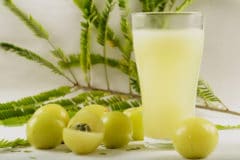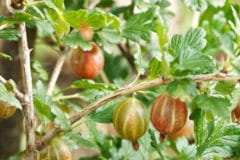Application purpose determines the time of harvest
Full, ripe gooseberries are rarely found in shops because they are not storable. Hobby gardeners enjoy the privilege of nibbling on the juicy-sweet fruits of the self-cultivated shrub in July and August. For storage and canning, however, fully ripened gooseberries are less suitable as they hardly contain any pectin. A high dosage of gelling agents would be necessary in this case.
For this reason, experienced hobby gardeners will carry out a green pick around the end of May. The berries have reached a third of their possible size by this time and are still largely green in color. Eaten raw, these gooseberries would bring tears to the eyes of hardened fruit lovers. However, they are ideally suited for the preparation of jam, juice or compote.
Proper picking reduces painful scratches
In order to get to the objects of desire from the thorny gooseberry bushes, many a scratch must be expected. To reduce scratches:
- wear long-sleeved clothing and trousers
- Put on work gloves or two pairs of rubber gloves on top of each other
- grasp a single branch by hand and lift it up
- pick the gooseberries with the other hand
If you want to take the wind out of the sails of the fortified gooseberry bushes when planting, you can prune them down to a slim spindle right from the start. In this case, the plant has a single main shoot that is attached along a rod. Only a few side shoots remain, which are pruned twice during the summer.
Tips & Tricks
Gooseberries are among the self-pollinated plants, so even a single shrub yields a delicious harvest. However, yield and taste can be significantly increased if you grow at least two different gooseberry varieties in the garden.
GTH












